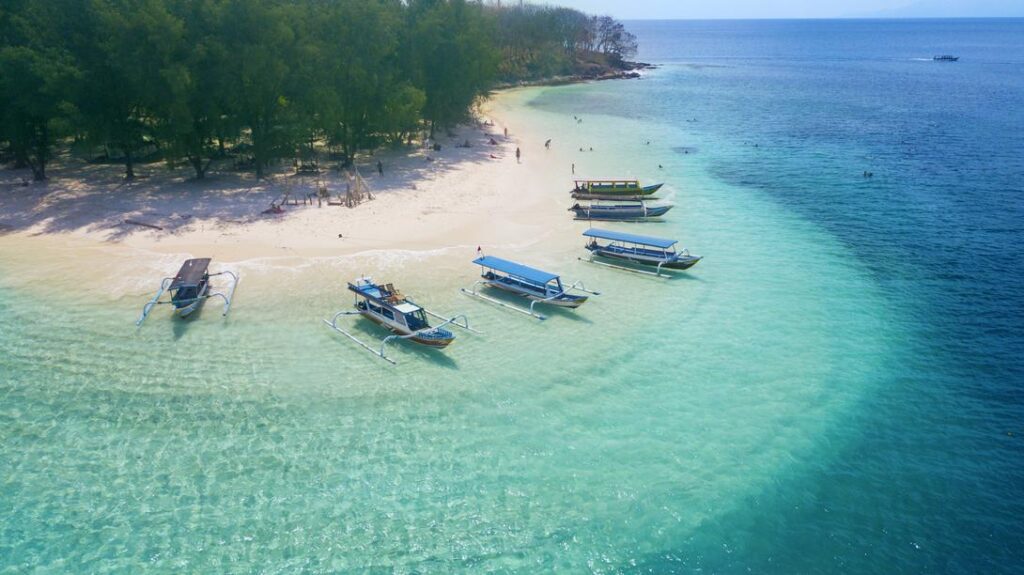Lombok, Indonesia – Travel Tips
Category
Categories
Popular Articles

**Overview of the Destination**
Located to the east of Bali, Lombok is an idyllic paradise in Indonesia. Known for its white sandy beaches, crystal clear water, stunning surf spots, and local Sasak culture, Lombok has so much to offer. Its notable landmarks such as Mount Rinjani, an active volcano that attracts nature lovers and adrenaline junkies, and the Gili Islands – famous for a relaxed pace of life and fantastic snorkeling – make Lombok a truly enjoyable and adventurous place to visit.
**Best Time to Visit**
Lombok has a tropical climate with two seasons: the rainy season (from November to April) and the dry season (from May to October). The best time to visit is during the dry season when the weather is perfect for beach and outdoor activities. However, if you’re looking to experience some of the island’s vibrant festivals like Bau Nyale Festival, plan your visit in February or March.
**Climate & What to Pack**
With its tropical climate, expect temperatures in Lombok to be consistently warm throughout the year, ranging from 25-35 degrees Celsius. Pack lightweight, breathable clothing, swimwear, sunscreen, and a hat for the beach. Don’t forget your hiking boots if you plan on trekking up Mount Rinjani, and a light jacket for cooler evenings.
**Getting There**
Lombok International Airport (LOP) is the main entry point. Transportation options from the airport include taxis, rideshares, or private transfers that can be arranged by your hotel. Foreigners traveling to Indonesia need a valid passport, but many nationalities can receive a visa on arrival, which is valid for 30 days.
**Getting Around Locally**
Lombok is well-serviced by taxis and rideshare apps like Grab. Public transportation includes local buses known as Bemos. Renting a scooter is a popular and economical way to explore the island; just remember to ride responsibly and wear a helmet. The islands are also very walkable, particularly in the smaller areas.
**Safety Tips**
Lombok is fairly safe for travelers, though, like anywhere, travelers need to be cautious and maintain awareness of their surroundings. Avoid isolated areas at night and always keep an eye on your belongings. Always agree on taxi fares in advance, and be cautious of common tourist scams involving money exchange rates.
**Top Things to Do & See**
Top attractions in Lombok include the Gili Islands, trekking up Mount Rinjani, and exploring traditional Sasak villages. Don’t miss Senggigi Beach and Kuta Beach for relaxing and surfing. The spectacular Sendang Gile and Tiu Kelep Waterfalls are also worth a visit.
**Where to Stay**
From luxury resorts to budget-friendly hostels, Lombok offers accommodations for all budgets. Senggigi is the main tourist hub with a range of options, and Kuta is ideal for surfers and beach lovers. The Gili Islands offer budget-friendly hostels and high-end beachfront villas.
**Food & Local Cuisine**
Try traditional Sasak dishes like Ayam Taliwang (spicy grilled chicken) and Plecing Kangkung (spicy water spinach). Food hygiene may not be up to western standards, particularly at street food stalls, so be cautious. Seafood is fresh and cheap, particularly in the beachfront cafés on the Gili Islands.
**Cultural & Practical Tips**
The official currency in Indonesia is the Indonesian Rupiah (IDR). Indonesian Bahasa is the official language, but English is widely understood in the tourist areas. Tipping is customary, and the plug type is Type C/F with 230V voltage. Wi-Fi access is commonly available in the hotels and cafes.
**Sustainable or Responsible Travel Tips**
Try to support local businesses and purchase local products. Avoid using single-use plastic and carry reusable water bottles. Dispose of your garbage properly, follow the marked trails during treks, and respect local customs and traditions.
**Personal Travel Tip**
Lombok is still less touristy compared to Bali. Try to explore off-the-beaten-path sights, and you may find some secluded beaches or hidden waterfalls all to yourself. Indulge in the local culture, try local cuisines, and interact with the Sasak people for a truly unique travel experience.










